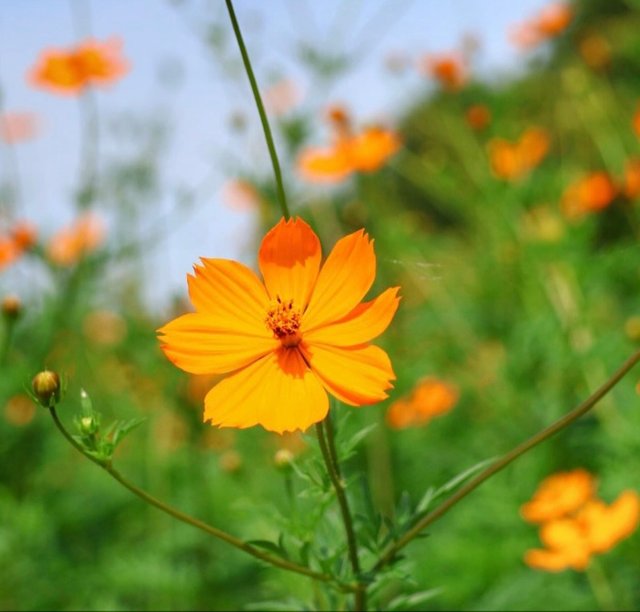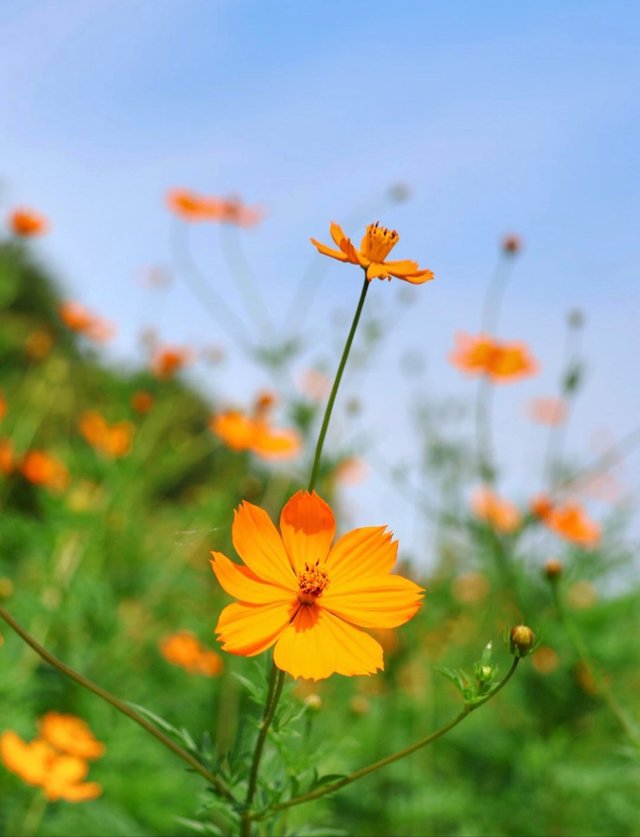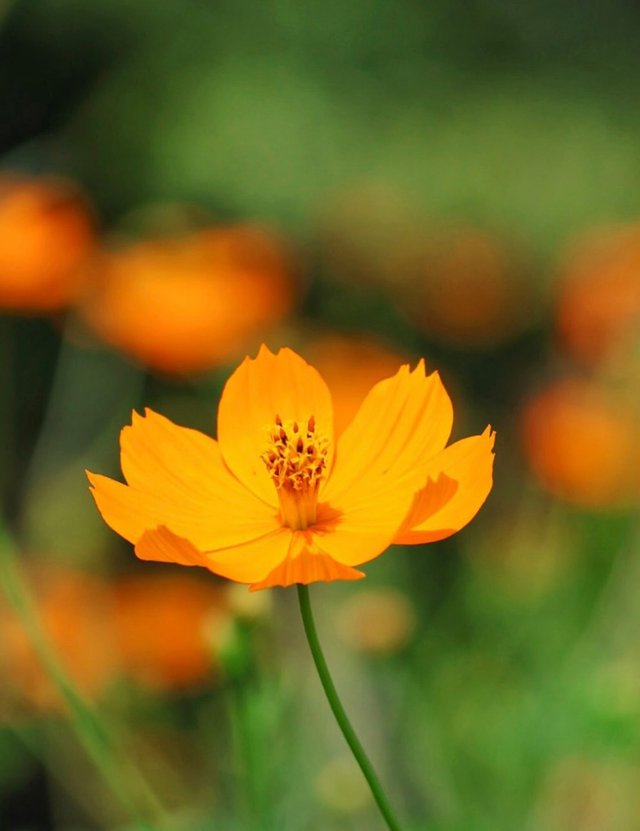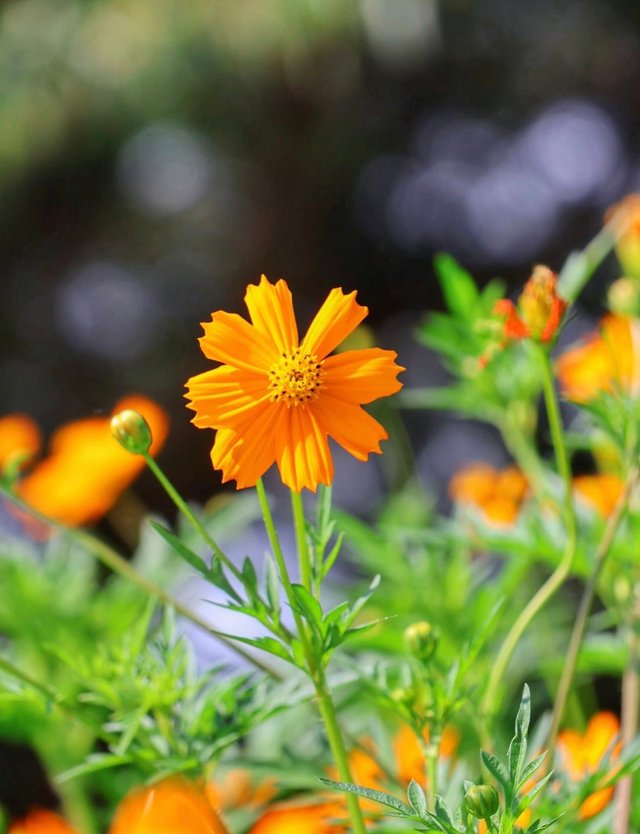Sulfur cosmos
Sulfur cosmos is a bright and charming flowering plant that belongs to the Asteraceae family native to Mexico Central America and northern South America but now widely naturalized in many parts of the world due to its adaptability and ornamental appeal it is a fast growing annual that is loved by gardeners for its profusion of daisy like blooms which come in vibrant shades of golden yellow orange and fiery red the plant is usually 1 to 2 meters tall with slender branched stems and delicate feathery leaves that give it a graceful airy appearance the flowers are simple yet striking composed of eight petals surrounding a yellow central disc which attracts a variety of pollinators such as bees butterflies.
And even hummingbirds making it not only beautiful but ecologically valuable sulfur cosmos is widely grown in home gardens public parks and wildflower meadows because of its ability to thrive in poor soils and withstand hot dry conditions unlike many delicate ornamentals it does not require rich soil or constant care in fact it prefers sandy or well drained soils and performs best in full sun once established it becomes highly drought tolerant making it an excellent choice for xeriscaping and low maintenance gardens it is also commonly used in companion planting as it draws beneficial insects while deterring pests in addition to its ornamental use sulfur cosmos has cultural.
And medicinal importance in some regions it has been used in traditional medicine for treating minor ailments and as a natural dye source for fabrics and crafts its bright orange and yellow petals produce pigments that have long been appreciated in textile art in horticulture it is often grown as a cut flower due to its long vase life and cheerful colors which add a burst of brightness to floral arrangements sulfur cosmos blooms profusely from summer until frost continuously producing new flowers as older ones fade and if regularly deadheaded it will reward gardeners with even more abundant blossoms the plant easily self seeds and can naturalize in open spaces which is why it is sometimes considered invasive in certain regions.




